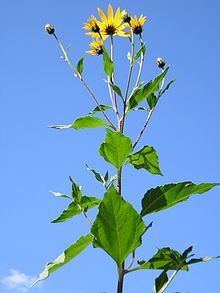The cold days and the lack of sunlight makes things grow slower but there is never a lack of things to do at the farm. We are still in deconstruction and cleanup mode. This week Natalie and I tackled the perennial area, where we keep asparagus, rhubarb, okra, some fruits and tuber roses. We cut and hauled out all of the woody brush, weeded and mulched the plants. Besides Sugar Creek giving me (hopefully) my last round of poison oak it has been a pretty stark transformation and quite a rewarding job.
Besides preparing for winter I suspect all small farms have been worried about the FDAs new Food Safety Modernization Act (FSMA). If you haven’t heard about it, this policy is aimed at cutting back food borne illnesses. Recent out breaks the past couple of years, in melons and sprouts have caused people to be concerned, according to the CDC 48 million people in the United States will suffer from a food borne illness each year. Although this law has some good purposed regulations it also has the power to hurt small local farms where these food borne illnesses are not coming from. Here are just a few of many issues about the purposed law:
- The use of manure and compost. Manure is natural compost many small farms use in order to return nutrients back into the soil. Here at Sugar Creek we follow organic guidelines on the use of raw manure. If manure is added we wait 120 days to harvest if the crop is a root vegetable or has any contact with the soil, or we wait 90 days to harvest if the crop is a leafy vegetable or above soil contact. The FDA wants to make it nine months between applying manure to harvest. This regulation will make it virtually impossible to put down manure on a field and expect to harvest anything from that spot in the same year. In turn many farmers would stop using manure and switch to a synthetic, costly soil amendment.
- Irrigation and Agricultural water. Water is an essential use for a farm. I am likely to be doing something with water at the farm at any time, whether it is irrigation, washing or cleaning. While I agree that the water should be safe, the new law would be costly for farmers.
While I am pro-food safety many purposed regulations of the FSMA have the potential to really put extra burden on small farmers and discourage new farmers. If you are interested I suggest to check out this website for more information and details, http://sustainableagriculture.net/fsma/
Hope to see everyone at market this weekend,
Ann and the Sugar Creek Crew
Sweet Potato Pie by Edna Edwards
· 2 c mashed cooked sweet potatoes
· 1 c sugar
· ½ tsp salt
· 1 c milk
· 2 eggs
· ½ c butter, melted
· 1 tsp vanilla
· 1 tsp lemon extract
· Unbaked pastry for 9” pie
Mix all the ingredients together, blending thoroughly. Turn into 9 inch pastry – lined pie pan and bake in 400 degree oven for about 30 minutes.
Autumn Napa Cabbage Salad
By: FoodLovesWriting.com
Serving Size: 4 to 6
Ingredients:
• 1 pound sweet potato, unpeeled, sliced into strips/matchsticks
• ½ pound carrots, unpeeled, sliced into strips/matchsticks
• 2 tablespoon coconut oil
• Pinches of sea salt
• 4 cups ribboned Napa cabbage
• 1 cup sliced onion
• ¼ cup toasted pecan pieces
• ¼ cup fresh parsley
• 1 small (one-ounce) fresh pepper, seeded and diced
• for the dressing
• ¼ cup olive oil
• 1 teaspoon Greek yogurt
• Juice of one lime and half a lemon (about ¼ cup)
• 2 teaspoons honey
• 2 teaspoons warm water, plus more as desired
• squirt of siracha
• ½ teaspoon salt
• ½ teaspoon pepper
•
Directions:
Preheat oven to 375F and melt a tablespoon of coconut oil in an 8 X 8 glass baking dish. Toss sweet potato strips with the oil and a pinch of sea salt in that dish; place dish in oven for 30 minutes. Repeat process in another dish with the carrot strips.
While the sweet potatoes and carrots roast, combine cabbage, onion, pecans, parsley, and pepper in a large bowl.
In a small bowl, make the dressing by combining olive oil, Greek yogurt, lemon and lime juices, honey, warm water, and siracha, whisking well. Taste the mixture and adjust to your liking --- add more water to thin it oil, more honey to sweeten, more siracha for a greater kick, etc.
When sweet potatoes and carrots are roasted, add them to the cabbage bowl. Drizzle dressing on top; keep adding until the salad is coated to your liking; you likely won't need all the dressing. Salt and pepper to taste.


